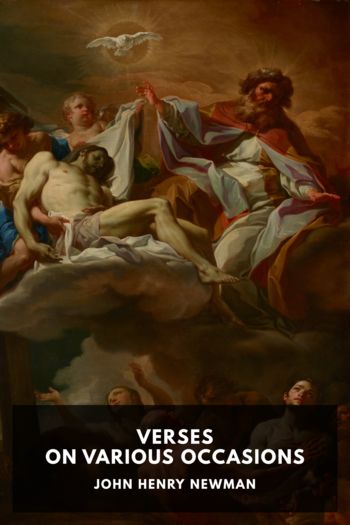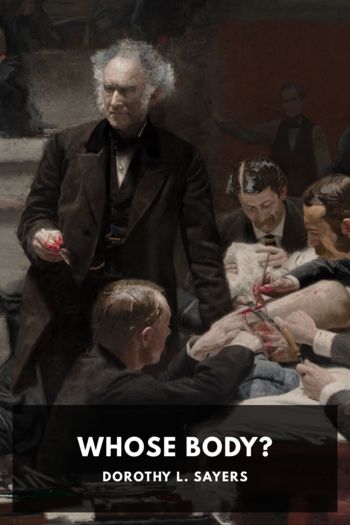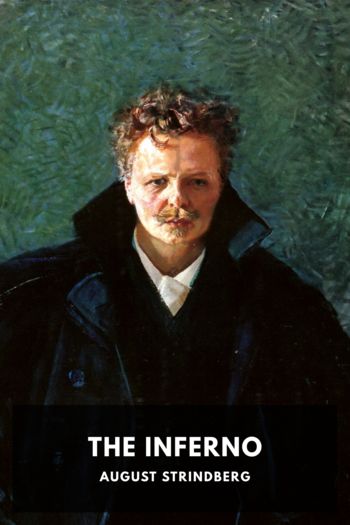The Divine Comedy, Dante Alighieri [best thriller novels of all time TXT] 📗

- Author: Dante Alighieri
Book online «The Divine Comedy, Dante Alighieri [best thriller novels of all time TXT] 📗». Author Dante Alighieri
St. Peter personifies Faith; St. James, Hope; and St. John, Charity. These three were distinguished above the other Apostles by clearer manifestations of their Master’s favor, as, for example, their being present at the Transfiguration. ↩
These words are addressed by St. James to Dante. ↩
In the radiance of the three theological virtues, Faith, Hope, and Charity. ↩
To the three Apostles luminous above him and overwhelming him with their light. Psalm 121:1:—
“I will lift up mine eyes unto the hills, from whence cometh my help.”
↩
With the most august spirits of the celestial city. See Note 1863. ↩
Beatrice. ↩
In God, or, as Dante says in Canto XXIV 42:—
“There where depicted everything is seen.”
And again, Canto XXVI 106:—
“For I behold it in the truthful mirror,
That of Himself all things parhelion makes,
And none makes Him parhelion of itself.”
↩
“Say what it is,” and “whence it came to be.” ↩
The answer to these two questions involves no self-praise, as the answer to the other would have done, if it had come from Dante’s lips. ↩
This definition of Hope is from Peter Lombard’s Lib. Sent., Book III Dist. 26:—
“Est spes certa expectatio futurae beatitudinis, veniens ex Dei gratia, et meritis praecedentibus.”
↩
The Psalmist David. ↩
In his divine songs, or songs of God. Psalm 9:10:—
“And they that know thy name will put their trust in thee.”
↩
Your rain; that is, of David and St. James. ↩
According to the legend, St. James suffered martyrdom under Herod Agrippa. ↩
“The mark of the high calling and election sure,” namely Paradise, which is the aim and object of all the “friends of God”; or, as St. James expresses it in his Epistle 1:12:—
“Blessed is the man that endureth temptation: for when he is tried, he shall receive the crown of life, which the Lord hath promised to them that love him.”
↩
This expression is from the Epistle of James 2:23:—
“And he was called the Friend of God.”
↩
The spiritual body and the glorified earthly body. Isaiah 61:7:—
“Therefore in their land they shall possess the double; everlasting joy shall be unto them.”
↩
St. John in Revelation 7:9:—
“After this I beheld, and lo, a great multitude, which no man could number, of all nations, and kindreds, and people, and tongues, stood before the throne, and before the Lamb, clothed with white robes and palms in their hands.”
↩
St. John. ↩
If Cancer, which in winter rises at sunset, had one star as bright as this, it would turn night into day. ↩
Any failing, such as vanity, ostentation, or the like. ↩
St. Peter and St. James. ↩
This symbol or allegory of the Pelican, applied to Christ, was popular during the Middle Ages, and was seen not only in the songs of poets, but in sculpture on the portals of churches.
Thibaut, Roi de Navarre, Chanson LXV, says:—
“Diex est ensi comme li Pelicans,
Qui fait son nit el plus haut arbre sus,
Et li mauvais oseau, qui vient de jus
Ses oisellons ocist, tant est puans;
Li père vient destrois et angosseux,
Dou bec s’ocist, de son sane dolereus
Vivre refait tantost ses oisellons;
Diex fist autel, quant vint sa passions,
De son douc sane racheta ses enfans
Dou Deauble, qui tant parest poissans.”
↩
John 19:27:—
“Then saith he to the disciple, Behold thy mother! And from that hour that disciple took her unto his own home.”
↩
St. John. Dante—bearing in mind the words of Christ, John 21:22:—
“If I will that he tarry till I come, what is that to thee? … Then went this saying abroad among the brethren, that that disciple should not die”—
looks to see if the spiritual body of the saint be in any way eclipsed by his earthly body. St. John, reading his unspoken thought, immediately undeceives him.
Mrs. Jameson, Sacred and Legendary Art, I 139, remarks:—
“The legend which supposes St. John reserved alive has not been generally received in the Church, and as a subject of painting it is very uncommon. It occurs in the Menologium Graecum, where the grave into which St. John descends is, according to the legend, fossa in crucis figuram (in the form of a cross). In a series of the deaths of the Apostles, St. John is ascending from the grave; for, according to the Greek legend, St. John died without pain or change, and immediately rose again in bodily form, and ascended into heaven to rejoin Christ and the Virgin.”
↩
Till the predestined number of the elect is complete. Revelation 6:11:—
“And white robes were given unto every one of them; and it was said unto them, that they should rest yet for a little season, until their fellow-servants also and their brethren, that should be killed as they were, should be fulfilled.”
↩
The spiritual body and the glorified earthly body. ↩
Christ and the Virgin Mary. Butler, Lives of the Saints, VIII 173, says:—
“It is a traditionary pious belief, that the body of the Blessed Virgin was raised by God soon after her death, and assumed to glory, by a singular privilege, before the general resurrection of the dead. This is mentioned by the learned Andrew of Crete in the East, in the seventh, and by St. Gregory of Tours in the West, in the sixth century. … So great was the respect and veneration of the fathers towards this most holy and most exalted of all pure creatures,





Comments (0)